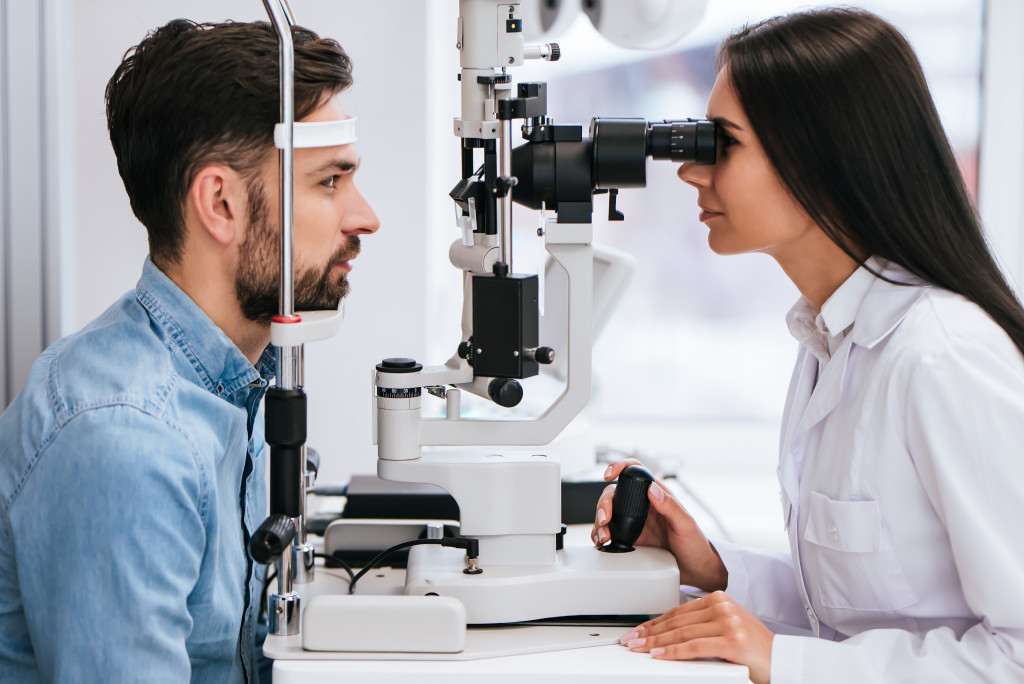Your vision is one of the most important senses, so taking care of your eyes and being aware of potential problems is essential. And even though most eye problems tend to affect more women, that doesn’t mean that men are in the clear. In fact, several common eye problems specifically target men. Here are some of the most common ones:
Glaucoma
Glaucoma is one of the leading causes of blindness in men. It is a degenerative eye disease that damages the optic nerve, which carries information from the eye to the brain. Glaucoma typically progresses slowly and painlessly, so it is often not diagnosed until it has caused significant damage to vision. There are two primary types of glaucoma: open-angle glaucoma, which accounts for about 90% of cases, and angle-closure glaucoma, which is less common but much more severe. Glaucoma risk factors include age, family history, diabetes, and hypertension. Treatment typically involves prescription eye drops or surgery to reduce intraocular pressure and prevent further damage to the optic nerve.
Cataract
Eye disease is a common problem among men, and cataracts are one of the most common eye diseases. A cataract is an eye condition where the eye’s lens becomes opaque or cloudy, making it difficult to see clearly. Cataracts usually develop slowly and can eventually cause blindness if not treated.
If your trusted optometrist diagnosed you with cataracts, he might recommend cataract surgery. An eye operation is the only effective treatment for cataracts and is typically performed on an outpatient basis. During surgery, the surgeon will make an incision in the eye and remove the cloudy lens. The incision will be closed with stitches, and a new artificial lens will be inserted. Most people who have cataract surgery experience a significant improvement in their vision.
Age-related macular degeneration
Age-related macular degeneration (AMD) is a degenerative disease of the retina that primarily affects older adults. It is the leading cause of vision loss in developed countries. There are two types of AMD: wet and dry. Dry AMD accounts for approximately 80-90% of all cases, while wet AMD, which is more severe, accounts for the remaining 10-20%.
Both types involve damaging the macula, the retina’s central portion, in control of the sharp central vision. In dry AMD, this damage occurs slowly over time due to the accumulation of debris called “drusen” under the macula. On the other hand, in wet AMD, new blood vessels grow underneath the macula, leaking fluid and causing rapid deterioration of central vision. There is no cure for either type of AMD, but there are treatments available that can slow progression and improve symptoms. Early diagnosis and treatment are critical to preserving vision.
Dry eye
Although both men and women can suffer from dry eye disease, it is more commonly found in men. Dry eye occurs when the eyes do not produce enough tears or when the tears are not of good quality. This can lead to a feeling of discomfort, as well as difficulty wearing contact lenses and an increased risk of eye infections.

There are several possible causes of dry eye disease, including environmental factors, certain medications, and underlying medical conditions. Treatment for dry eye disease may involve using artificial tears, making lifestyle changes, or, in some cases, surgery.
Eye fatigue
Men are more likely than women to experience certain eye diseases. One of these is eye fatigue, also known as visual fatigue. Eye fatigue occurs when the eyes are overworked, often from staring at a screen for long periods. Symptoms include eyestrain, headaches, and blurred vision. In some cases, eye fatigue can lead to more severe problems, such as dry eye syndrome and macular degeneration.
To help prevent eye fatigue, taking breaks from screens every 20 minutes or so is essential, and blinking regularly. In addition, using artificial tears can help to lubricate the eyes and reduce symptoms. If you experience persistent eye fatigue, visit an eye doctor to rule out other possible causes.
Floaters
Floaters are small, dark spots that appear in your field of vision. They are actually tiny clumps of cells and other matter that float in the jelly-like substance that fills the inside of your eye. Floaters are common and usually harmless. However, they can sometimes be a symptom of a more serious condition, such as retinal detachment or vitreous hemorrhage.
Experience a sudden increase in floaters or see flashes of light or shadows in your peripheral vision. You should see an eye doctor immediately, as these could be signs of a severe problem. Floaters can be annoying, but they usually don’t cause any lasting damage to your vision.
The takeaways
Many common eye problems can affect men. However, this does not mean you have to live with poor vision. There are treatments available for many of these conditions, and taking steps to protect your eyes can help to prevent them from occurring in the first place. If you are experiencing any problems with your vision, see an eye doctor to get the treatment you need.

